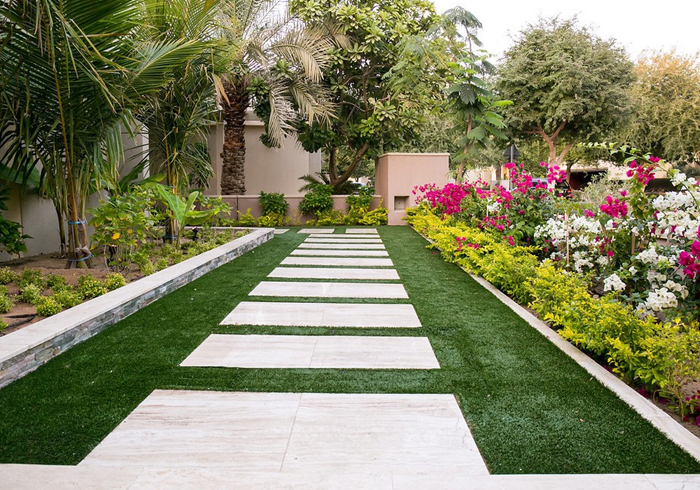The 6-Second Trick For Landscape Design
The Only Guide for Landscape Design
Table of ContentsThe Of Landscape DesignLandscape Design for BeginnersWhat Does Landscape Design Do?Examine This Report about Landscape Design7 Easy Facts About Landscape Design Described
A yard can usually be split into 3 areas: public (the front yard), exclusive (the back lawn), and solution (commonly the side lawn). The location of task areas depends mainly on the kind of area, the dimension of area required, the type of task, and the preferred proximity to various other activities and frameworks.The outside wall surface of your home usually offers as the first wall surface or starting factor of an outside room. Incompatible uses need to be separated, and relevant tasks, such as food preparation and eating, should be assembled to make the lawn extra efficient and delightful. When using hardscape to develop rooms, utilize building and construction material similar to that made use of in your home for continuity from the residence into the garden.
Connected rooms. Credit History: Gail Hansen, UF/IFAS Making use of similar hardscape functions and duplicating plants draws the eye around the garden. Essential factors along the road can be stressed with growings or features that draw interest and motivate motion in a certain instructions. Relocating along the course takes a person from one area to the next and allows the user to have a variety of experiences.
Facts About Landscape Design Revealed

For emotional comfort plants are used as physical or implied barriers for personal privacy and security. Physical barriers block both the sight and accessibility to a space and consist of fences, wall surfaces and plant hedges. Suggested obstacles, typically low expanding plants, block access yet not the sight (Figure 9). Various other functions of plants consist of cleaning the air, avoiding disintegration and soil loss, preserving wetness in the dirt, and returning natural matter to the soil.
Physical and suggested barriers. Credit: Gail Hansen, UF/IFAS For these factors, the kinds of plants to be used (such as trees, bushes, or groundcovers) ought to be chosen in the beginning of planning (Landscape additional resources Design). Plant types are picked for their functional abilities to ensure that their future objective and called for space can be considered at the same time

What Does Landscape Design Do?
Each plant mass is in front of, behind, the original source or following to, another mass. Credit History: Gail Hansen, UF/IFAS Duplicating plants within a mass and repeating masses with comparable plants connects the yard together. The private plant features have to be thought about to effectively layer and mass plants.
All plant compositions start with the primary framework plants, the large, mostly evergreen history plants-such as the trees and huge hedges. These plants separate or enframe areas, regulate the dimension of the room, and give the beginning factor for selecting the appropriate attributes of the 2nd layer, midground plants, for massing and infill.
Important factors in the yard must be highlighted by the use of one-of-a-kind plants, distinctive frameworks, or garden accessories. Noting thresholds or entrances to areas can be finished with gates, arbors, and steps, or via the use of unique and vibrant plants. The form and/or design theme of the yard will commonly assist determine the essential points and just how they ought to be highlighted.
Other vital places in the backyard are focal factors, which is made use of to aesthetically arrange a landscaped location. Various perspectives or point of views can expose various make-ups in the landscape that may require a variety of focal points.
5 Simple Techniques For Landscape Design
Plant types. Credit: Gail Hansen, UF/IFAS After kind, structure is the next leading function of a plant; coarse, medium and great appearances can websites be utilized for contrast and focus in the landscape.
The pleasurable scent of plants, the audio of wind in the trees, the noise and texture of water, and the shades and textures of sculptures, pots and yard furniture all include to the experience of the garden. One detail that is usually ignored is the effect of light on the visual appeals of the plants.

4 Easy Facts About Landscape Design Explained
It is important to understand the ultimate mature size of plants so they can be positioned in the right location and spaced appropriately when they are mounted. Providing plants area to expand is an obstacle because the usual mature size is normally based upon optimal expanding conditions and the environmental conditions of a site might cause a plant to grow bigger or remain smaller sized.